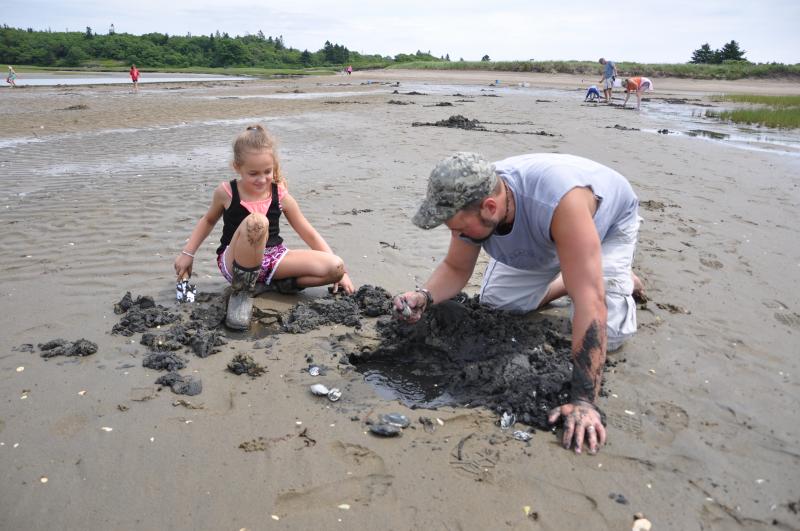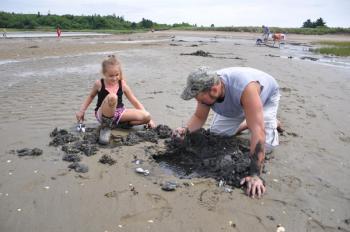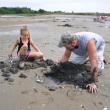Can you dig it?
 EMMA AND JAMES VALLEY dig for clams Thursday, June 17 with Joleen Valley (not pictured). The trio drove from Richmond to go digging for clams at Reid State Park. BEN BULKELEY/Wiscasset Newspaper
EMMA AND JAMES VALLEY dig for clams Thursday, June 17 with Joleen Valley (not pictured). The trio drove from Richmond to go digging for clams at Reid State Park. BEN BULKELEY/Wiscasset Newspaper
 EMMA AND JAMES VALLEY dig for clams Thursday, June 17 with Joleen Valley (not pictured). The trio drove from Richmond to go digging for clams at Reid State Park. BEN BULKELEY/Wiscasset Newspaper
EMMA AND JAMES VALLEY dig for clams Thursday, June 17 with Joleen Valley (not pictured). The trio drove from Richmond to go digging for clams at Reid State Park. BEN BULKELEY/Wiscasset Newspaper
The first step to dig for clams is to find a clam.
Once said clam has been spotted, it's best to dig a seven- to eight-inch hole alongside it and begin gingerly and cautiously searching with fingers, because clams can be sharp, Shellfish Warden Jon Hentz told a group of onlookers Thursday, July 17 at Reid State Park in Georgetown.
The group of 30 crowded around the warden as he demonstrated how to search for, find and dig up clams during a Kennebec Estuary Land Trust (KELT) exhibition on digging for clams.
“The important thing is to first dig a hole, a good deep hole,” said Hentz, who has been a warden for 24 years. “Then you want to be careful, because you can cut yourself on the shell.”
Hentz also showed how a small plastic ring is used to properly measure clams. The clams that fit through the ring are thrown back into the mud and sand; the ones that don't fit are served with water and butter.
Ruth Indrick, KELT project manager, was also on hand to demonstrate how water samples are collected throughout the state where shellfish are harvested.
“These tests are done throughout the state, looking for things like red tide,” she said. “If (red tide or bacterial abnormalities) are found, it will be posted all around that no clams can be taken.”
But, on a sunny July afternoon, the KELT clam digging event was sign-free and clam diggers young and old were able to dig up a peck-a-piece on the clam flats.
Event Date
Address
United States























